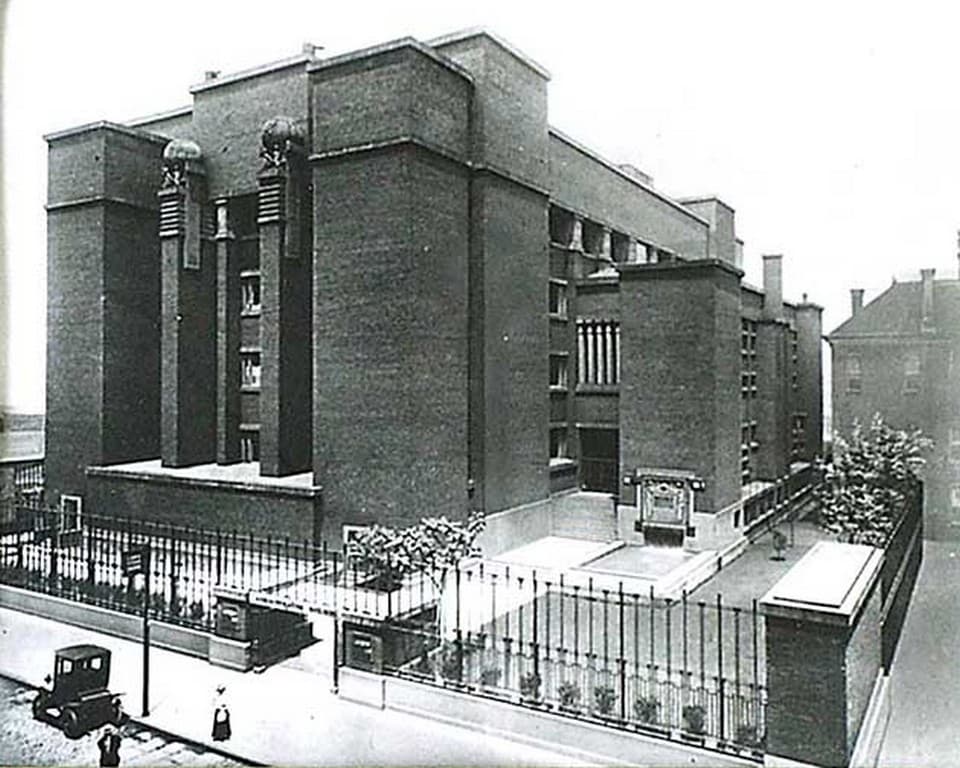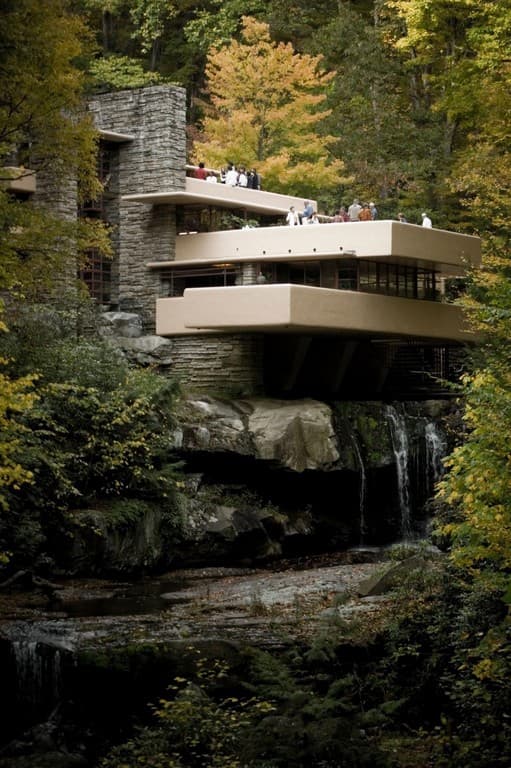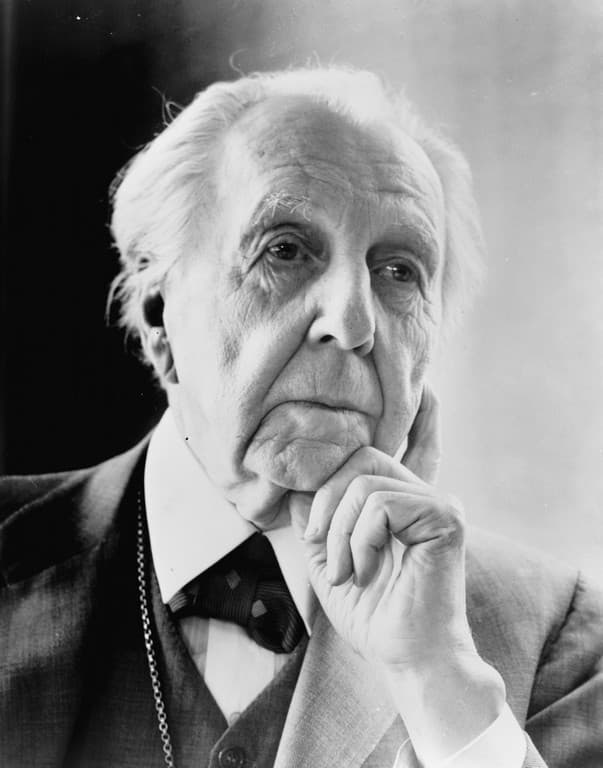Frank Lloyd Wright- The Great American Architect
- Interior Design
Frank Lloyd Wright- The Great American Architect
Contact us
Bengaluru
Campus 1 : JD School of Design, No. 18-1, Brigade Road, Bengaluru,Karnataka – 560 001.
Campus 2 : No. 40, Swan House, 4th Cross, Residency Road, Bengaluru, Karnataka – 560001.
Goa
Musthtifund Saunstha , Near Mahalaxmi Temple,Dada Vaidya Road, Goa-403001
Frank Lloyd Wright, a well-known American architect from the early 20th century, was born Frank Lincoln Wright passed away on April 9, 1959, after living from June 8, 1867. He designed the architectural blueprints for many different types of buildings, including petrol stations, beer gardens, art museums, banks, vacation homes, office buildings, churches and synagogues.
Wright designed over 1,000 structures and completed 532 works. Wright advocated for the design of structures that coexisted peacefully with the environment and with human habitation. “Organic architecture,” he called his theory. This architectural technique was used on Fallingwater (1935), which many have referred to as “the best all-time work of American architecture.” Wright was a leading figure in the Prairie School architectural movement and the designer of the famous Usonian home, a ground-breaking idea in American urban planning.
He is recognised as one of the greatest architects of the 20th century and is credited with creating the American architectural style. In Richland Centre, Wisconsin, on June 8, 1867, Wright was born into a farming family.
His work features inventive and one-of-a-kind examples of various architectural styles. Wright designed a large number of the interior elements of his buildings, such as the furnishings and stained glass. Wright, who authored 20 books and countless articles, was a popular lecturer in both Europe and the US. His colourful personal life was widely publicised, particularly following the 1914 murders and fire at his Taliesin studio. Despite his considerable fame during his lifetime, Wright was named “the greatest American architect of all time” by the American Institute of Architects in 1991.
Due to complications from surgery, Wright passed away in Phoenix, Arizona, on April 9, 1959. At ninety-one years of age.
Early Life:

Wikipedia
Born in the Wisconsin farming village of Richland Centre on June 8, 1867, Frank Lloyd Wright was a man of vision. His given name at birth was Wright Frank Lincoln. His father, William Carey Wright (1825–1904), was a well-liked preacher, music instructor, occasional lawyer, and orator in the neighbourhood. William Wright had met and married Anna Lloyd Jones (1838/39–1923), a county school teacher of Welsh ancestry, while serving as the Richland County superintendent of schools the previous year.
The Wright family left Richland Centre and moved to Weymouth, Massachusetts. Following that, the Wright family—who had been having financial issues in Weymouth—returned to Spring Green, Wisconsin. Their new residence was Madison. Even though William was a distant parent, he still had a passion for music and especially made sure his children heard works by Johann Sebastian Bach.
Wright might have attended Madison High School, but there is no evidence to suggest he graduated. He was granted admission to the University of Wisconsin–Madison in 1886 as a special student. He collaborated with civil engineering professor Allan D. Conover there and became a member of the fraternity Phi Delta Theta. For two semesters, he also studied part-time. His new home was in Chicago, Illinois, in 1887.
Wright did not get along with other draughtsmen well in his early career. He claimed that during the first few years of his apprenticeship, a number of violent incidents occurred between them. Subsequently, numerous other draughtsmen also exhibited a lack of regard for his workers. In spite of this, “Sullivan gave Wright great design responsibility and took him under his wing.” Later, Wright would address Sullivan as Lieber Meister (German for “Dear Master”) out of deference. Paul Mueller, the office foreman, and Wright also became close. Afterwards, Mueller would be hired by Wright between 1903 and 1923 to build several of his commercial and public buildings.
At that time, Wright began working on residential buildings for Adler & Sullivan. [16] At the time, Wright designed his own houses. Sullivan was not aware of Frank Lloyd Wright’s contributions until 1893, when he discovered that one of the houses was a design by the architect. This particular house was built for Allison Harlan in the Kenwood neighbourhood of Chicago, a few blocks away from Sullivan’s townhouse.
There are many examples of Wright’s work in Buffalo, New York, because he was friends with Darwin D. Martin. In 1902, the Larkin Company decided to build a new building. After moving to Buffalo, Wright designed homes for three of the company’s executives, including the Darwin D. Martin House (1904) and the Larkin Administration Building (1904–1950 destroyed). Wright built their summer house later. To Darwin D. Martin and Isabelle’s benefit, he also established the Graycliff Estate.
Well-known structures by the legendary architect:
Fallingwater:

Wikipedia
Frank Lloyd Wright designed a summer house for the Kaufmann family over a waterfall in Pennsylvania in 1935. He called the residence “Fallingwater.” There are those who think it is the most famous private home in the world.
From a distance downstream, the house looks imposing, but it actually sits low in the valley above the stream. It features expansive terraces, some of which protrude sharply and hang over the stream or waterfall. Only thin steel supports are present in between the living area’s completely enclosed glass doors and windows.
The tower has windows that reach the entire height of each of its three stories. The main material used to build the house is stone. The house’s design features strong vertical and horizontal lines. Similarities with other natural structures include the horizontal and vertical lines seen in rock formations. One can hear the sound of the waterfall throughout the entire house. Wright aimed for a tightly integrated interior-outdoor living space that exuded naturalness. Membership in the American Institute of Architects voted The Fallingwater House the “best all-time work of American architecture” in 1991.
Robie House:

U of Chicago
Wikipedia
One well-known residence was called the Robie House. Its windows were geometric stained glass, and its layout was akin to a maze. The Robie House was a unique residence with unusual colours, patterns, and shapes. After he finished it in 1910, it was used as a children’s home. Actually, lots of children lived and played there with their families until 1926, when it was deemed unfit for habitation and made public. Several times, it was supposed to be destroyed. Nonetheless, Wright’s motivations for building it and the many fond memories he had of it prevented his home from being destroyed twice. At a cost of $10 million, restoration is currently underway.
Johnson Wax Headquarters:

Wikipedia
Frank Lloyd Wright also designed the renowned Johnson Wax Headquarters. The building clearly reflects Wright’s vision of streamlined Art Moderne design, which gained popularity in the 1930s. The building’s abundance of circular forms deviates from Wright’s earlier Prairie School designs. More than two hundred different curved “Cherokee red” bricks were used to create the sweeping curves on the outside and inside. By using traditional Wright mortar between the bricks, the building’s horizontality was accomplished. The warm, reddish colour of the bricks was reflected in the polished concrete floor as well. The white stone trim and columns make a subtle yet distinct difference. Steelcase made all of the furniture, which mirrored many of the building’s unique architectural features. Wright designed the building.
With the building on one side and a covered carport on the other, the building’s entrance is situated inside the structure. Similar to the steel-reinforced, tree-like columns found in the Great Workroom, the concrete columns supporting the carport are shorter.
The Illinois:
Wright came up with the concept to build the Illinois, a mile-tall skyscraper. Chicago, Illinois, was to be the construction site. With a gross area of 18,460,000 square feet (1,715,000 m2), it may have had 528 floors. 150 helicopters and 15,000 cars would have parking, according to Wright.
Museum of Solomon R. Guggenheim:

Wikipedia
The Solomon R. Guggenheim Museum in New York City. Wright spent 16 years (1943–1959) working on this project, which is probably his most well-known creation. The side of the building facing Fifth Avenue. Its insides resemble the interior of a seashell.
Its distinctive central geometry was intended to make viewing Guggenheim’s collection of his paintings easy for guests. They can accomplish this by taking the lift to the top floor and walking down the central spiral ramp, which descends gradually and is adorned with triangular and circular light fixtures that blend in with the geometric design of the building.
Nevertheless, after the museum was completed, Wright had a few of his ideas abandoned, including his recommendation to paint the interior an off-white colour. Furthermore, the museum currently arranges its exhibits so that guests can view them without going down from the top floor by climbing the curved path.
Later career:

Wikipedia
Wright was a strong supporter of working independently. He was a fierce critic of the American Institute of Architects throughout his career, calling it “a form of refined gangsterism” and “a harbour of refuge for the incompetent.” The Institute called Wright “an old amateur,” to which Wright replied, “I am the oldest.” Wright established the Frank Lloyd Wright Foundation in 1940. It was designed with education in mind. It maintains Taliesin West in Arizona and Taliesin East in Wisconsin, two Wright structures. It holds 300,000 documents and over 22,000 drawings by Wright in its library. The Frank Lloyd Wright School of Architecture is housed there.
Death:
Wright passed away in Phoenix, Arizona, on April 9, 1959, while undergoing surgery to remove an intestinal blockage. After Wright’s death in 1985, Olgivanna, his third wife, took over as director of the Fellowship until her own death in Scottsdale, Arizona. Frank Lloyd Wright‘s postage stamp debuted in 1966. Later that year, it was learned that she had moved to Scottsdale with Wright and her daughter from a previous marriage, asking to be cremated. By then, Wright had been dead for over twenty-five years, interred in the Lloyd-Jones cemetery near the Unity Chapel in Taliesin, Wisconsin, his later-life home. From Wright’s grave, members of the Taliesin Fellowship excavated his remains. His cremated remains were then taken to Scottsdale and interred in the city’s memorial garden.
As we come to the end of our investigation into the illustrious Frank Lloyd Wright, it is clear that his avant-garde style of building has had a lasting impact on society. His avant-garde creations are a tribute to the strength of imagination and tenacity, inspiring and captivating designers, architects, and enthusiasts alike.
There are plenty of opportunities for learning and development for those who want to follow in Wright’s footsteps and forge their own route in the field of design. Comprehensive interior design programmes are offered by organisations such as JD School Design, which gives students the inspiration, information, and abilities they need to start their own life-changing adventures.
By pursuing admissions at the JD Institute of Fashion Technology, aspiring designers can immerse themselves in a supportive and dynamic learning environment where they can hone their craft and nurture their creative vision. With dedication, passion, and the guidance of experienced professionals, students have the potential to become trailblazers in their own right, shaping the future of design and leaving a lasting legacy, much like the great Frank Lloyd Wright himself.
